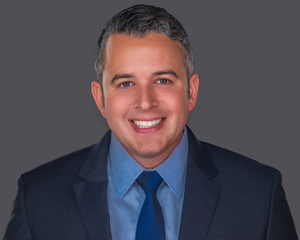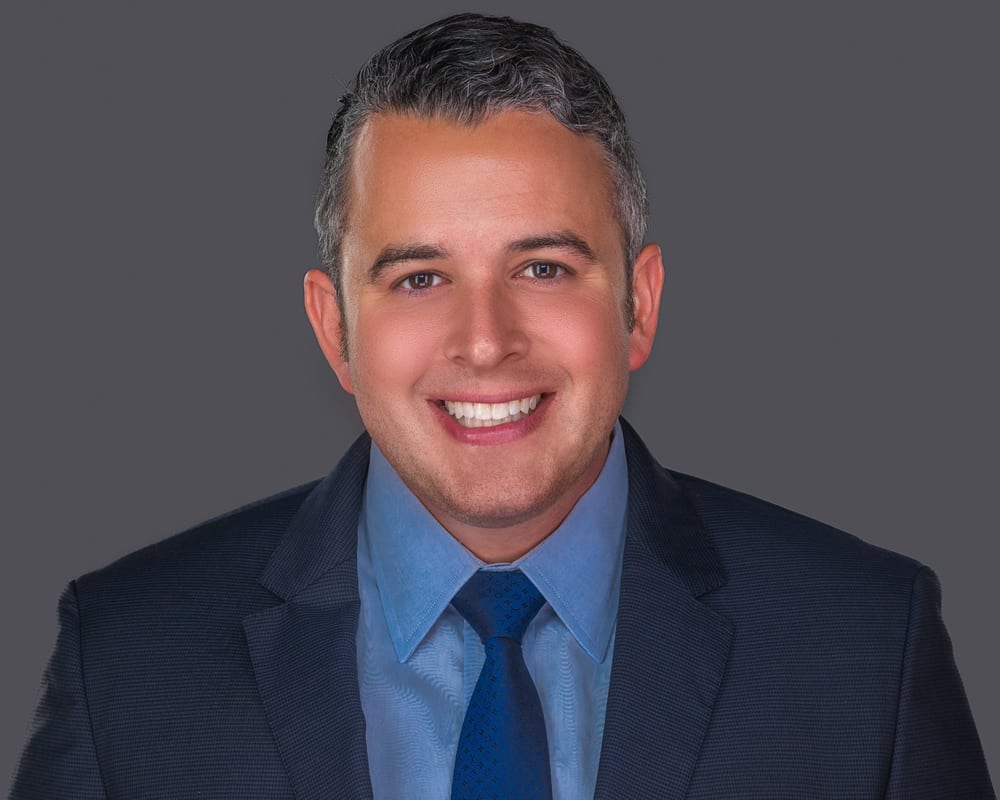Di Pietro Partner’s goal is to advocate for you when you need our help. Our team of experienced legal and medical professionals are dedicated to providing high quality informative content. The information on this page and other areas on the website is routinely fact checked, updated, and approved by our team of licensed attorneys and professional editors. If you find any errors, feel free to let us know and we will review the information immediately.
In the medical field, strokes are an unfortunate yet relatively common occurrence. Defined as a sudden interruption in blood supply to the brain, a stroke can be debilitating to the individual and devastate their families, burdening them with lifelong caretaking and medical bills. In extreme circumstances, a stroke can cause death, potentially leaving families without a source of income and children uncared for. But this doesn’t have to be the case.
If a doctor or hospital correctly diagnoses a stroke in time, they can administer a drug known as a tissue plasminogen activator (tPA), which breaks up the clots that cause a stroke. There is a narrow window of time to administer this drug before serious and permanent brain damage occurs. Unfortunately, there are times that tPA is not administered within the appropriate time period due to either hospital error or a doctor failing to diagnose a stroke in a timely manner. When this type of malpractice occurs, it often results in irreversible consequences that require financial compensation to offset. An experienced medical malpractice attorney will be able to file a stroke lawsuit and get the compensation you deserve.
At Di Pietro Partners, we have a board certified physician on staff to review claims of medical malpractice due to stroke, along with other causes for injury.
Defining a Stroke
As mentioned previously, a stroke occurs when there is an interruption in blood flow to the brain. When this happens, it causes brain cells to die due to oxygen starvation from the lack of fresh blood flow. If this happens for a long enough time period, it can cause entire sections of a brain to die, causing permanent disability and even possibly death. There are two main ways in which a stroke can occur:
Ischemic – This is when there is a blockage in an artery (also known as a clot), which prevents blood flow to a part or parts of the brain.
Hemorrhagic – This is when there is a rupture in a blood vessel, causing pressure to build up in the brain cavity.
Strokes in Young People
Something that should be noted is that while strokes are commonly associated with older individuals, they can and do occur in younger people. This is something that can be overlooked by healthcare professionals, resulting in them being slow to recognize the signs and symptoms of a stroke. This oversight can cause a lifetime of unnecessary disability, discomfort and even death.
Stroke Causes
While a stroke can happen at any age, there is usually a specific cause when it happens to healthy young individuals. Strokes of this kind are usually caused by a vertebral artery dissection, or VAD. This can be painless and go unnoticed, further delaying the diagnosis and response.
Vertebral artery dissection is a flap-like tear of the inner lining of the vertebral artery. There are two of these arteries located in the neck, which act as the main source of blood to the brain. When this tear in the artery occurs, blood starts accumulating and eventually clotting in the immediate area. This can cause a stroke when a piece of the clot breaks off and travels through the artery, causing a blockage in an area of the brain. This blockage inhibits blood flow to the brain, which causes brain cells to die due to oxygen starvation. Below are some common activities that can cause VADs:
Tilting head back or at odd angles for extended periods of time
- Chiropractic manipulation
- Violent coughing, sneezing or laughing
- Working out
- Any type of sport or activity that can induce trauma to the neck
Symptoms
Because of the narrow window of time in which a tPA can be administered effectively, it is important to understand the symptoms of a stroke. The timely recognition of a stroke is of the utmost importance, as it can mean the difference between life and death for a person. The most common symptoms of a stroke are:
- The sudden occurrence of abnormal weakness, heaviness or numbness on either one side or both sides of the body. This commonly manifests as the dragging of a leg or inability to move an arm.
- Loss of language. This is usually when a person wants to say a word or phrase but is not able to verbalize it.
- Vision loss on either one side or both sides of the body
- Sudden occurrence of blurry vision
- The sudden occurrence of facial drooping, slurred speech, or uncontrollable drooling
- Unexplained sudden severe headaches
How are Strokes Diagnosed in Hospital
If the patient is showing symptoms as listed previously, then a hospital will immediately give them a CT scan. This detects the presence of blood outside the arteries of the brain, which is an indicator of a hemorrhagic stroke. If there is no presence of blood in the brain outside the arteries then it is likely that the patient has an ischemic stroke caused by a blood clot, and is considered eligible for tPA as long as other criteria are met. If blood is detected outside of the arteries in the brain, then the patient is ineligible for tPA and other treatment avenues must be pursued.
Treatment of Strokes
Strokes are treated differently depending on which type they are. The majority of strokes are caused by blood clots and are therefore the ischemic type which can be treated by the administration of tPA. The treatment can be successful as long as it is administered within 3 to 4.5 hours of when symptoms first occur. This time period is commonly known as the window for treatment. After this time period, the risk of life threatening bleeding caused by the drug can outweigh its benefits. It should be noted that in certain limited situations, the tPA can be administered up to 12 or more hours after a stroke occurs.
Obviously, the sooner a patient exhibiting stroke symptoms receives tPA, the better their odds of a positive outcome. For example, if a patient were to receive tPA 60 minutes after their symptoms first occur, they will fare better than if they were given this same drug 2 hours after their first symptoms. It is for this reason that expediency in the transport of a stroke patient to the hospital is so critical, as well as the correct and timely diagnosis of their condition by a doctor.
In addition to tPA, there are other treatment options for strokes caused by blood clots. One of these treatments is referred to as a mechanical thrombectomy, which involves a specialist physically removing the clot in the artery using a special implement known as a MERCI device. This operation can be successful in restoring blood flow in as short as 8 to 24 hours after the onset of a stroke. Its success however hinges on the patient’s health, the location of the clot and the size of the stroke itself.
Patients with hemorrhagic strokes have more limited options for treatment. In most cases, surgery involving the opening of the skull may be necessary to relieve pressure buildup inside the brain cavity. Because this involves the expertise of a neurosurgeon, there is the possibility that a patient will need to be transferred to another hospital or faculty that has neurosurgeons on staff if the current faculty does not have one. Malpractice cases for hemorrhagic strokes are often based on the failure of healthcare providers to transfer the patient to a more appropriate faculty, such as a certified stroke center.
Misdiagnosis Statute of Limitations
Florida’s series of complex Medical Malpractice Laws can be difficult to navigate and understand. The Florida Malpractice Act places the burden of proof upon the plaintiff to prove a medical professional was in fact negligent. In order to do this, another medical professional from the same field will be needed to testify for you. Additionally, causation must be proved, meaning that there must be proof that the medical professional’s actions or failure to act was the cause for your injuries.
“An action for medical malpractice shall be commenced within 2 years from the time the incident giving rise to the action occurred or within 2 years from the time the incident is discovered, or should have been discovered with the exercise of due diligence; however, in no event shall the action be commenced later than 4 years from the date of the incident or occurrence out of which the cause of action accrued, except that this 4-year period shall not bar an action brought on behalf of a minor on or before the child’s eighth birthday…”
In other words, in many cases, there is a 2-4 year statute of limitations on malpractice claims in Florida with several exceptions (i.e. a minor child was involved). Furthermore, cases involving fraud, intentional misrepresentation, or concealment carry a 7 year maximum limit on filing a claim. As a result, it’s imperative to have your case reviewed by our legal and medical professionals as soon as possible.
Because of this limited time window, it is absolutely critical that you hire an experienced medical malpractice attorney to investigate your case as soon as possible.
Florida Malpractice Attorneys Ready to Help
While many stroke patients end up passing away, there are a portion who survive and suffer from life-long disabilities. This can cause serious financial hardship on families, and adds a tremendous amount of stress to their everyday lives. What makes this even worse is when it is unnecessarily caused by the negligence or malpractice of a medical professional or hospital.
It is important for families who find themselves in this situation to reach out to an experienced attorney specializing in medical malpractice and stroke lawsuits to ensure you receive the justice you deserve. While nothing can truly repair or fix the loss resulting from a stroke, the financial compensation from a successful malpractice case can help to ease the burden on families and individuals tasked with caring for those disabled as a result. Di Pietro Partners have a long history of achieving justice for their clients, and specialize in medical malpractice cases. Contact us today to find out how we can help.




